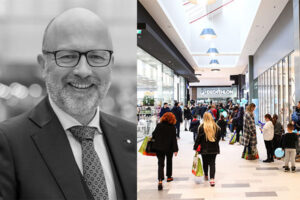BY CHRIS IGWE

We know that technology has had a dramatic effect on purchasing habits—and where customer engagement now increasingly happens has had a compounding effect. Many retailers have simply declared a moratorium on any expansion until they are better able to understand their options.
So, if there is a rationalization taking place among retailers, why do we continue to see the proliferation of additional square meters for new shopping centers and retail parks or large-space users extending their floor areas?
We have enjoyed steady growth in the building of new shopping centers in Europe since the late 1970s, but we have been paying little or no attention to the fact that retail sales in stores and shopping centers/retail parks have stagnated at best, while sales densities over the past 10 years within shopping centers and among retailers have slowed or declined, further impacted by the effects of online
. While we are seeing structural changes in the industry, many of which are irreversible, retailers and brands are also looking at softer ways to make a positive impact. What are some of these?
So much is said, and rightly so, about digital and how it is transforming the industry, but this is only part of the story. How can consumers who are more complex than we thought, less loyal than previously, and who have a diminished attention span and limited time, be engaged effectively?
The focus is now on the sensorial or emotional connection that consumers get when they enter a store or shopping center and connect with staff. This flows also into the design or redesign of the store—how to create a more welcoming and appealing environment that encourages consumers to dwell in the store or center, browse, and eventually shop.
Brands and shopping center owners are taking seriously the reality that we do not actually go out to shop, but shop when we are out. This fundamental difference in behavior patterns is leading brands to redesign and reconfigure their stores in a way not seen for a very long time—a clearer, more curated store, with natural materials. But this must be coupled with a storytelling offered by the (re)design.
The corollary is that certain brands have understood that stores are less likely to be profit centers, and indeed may not be as profitable as expected, but they can encourage customers to buy in the store or online by providing them with a lasting experience.
Stores and shopping centers can thus no longer survive on the basis of “build it and they will come.” Instead, consumers have to be given a reason to visit and return. There is a need to connect with their emotional, rather than rational, side.
Ever more retailers are accepting that there is a science to understanding consumer behavior. This has led them to embrace research to redefine what exists and discover its current and future relevance in order to optimize their business in a changed retail landscape.
Regardless of whether these are the best or the worst of times, when one combines two of the most innovative and creative sectors, technology and retail, and adds science to them, the results can only be amazing, given enough time.





